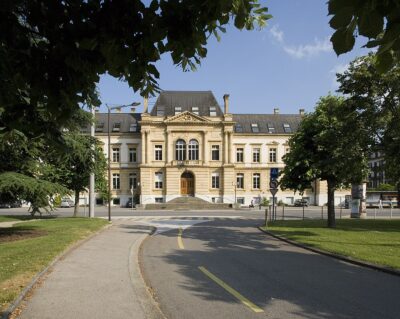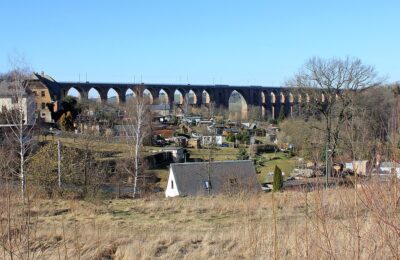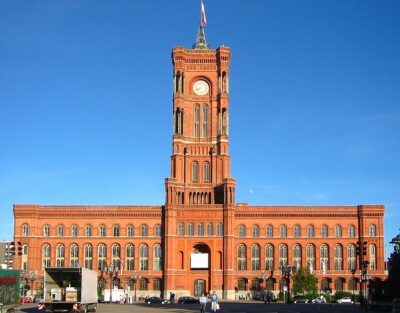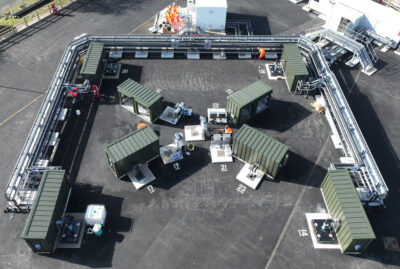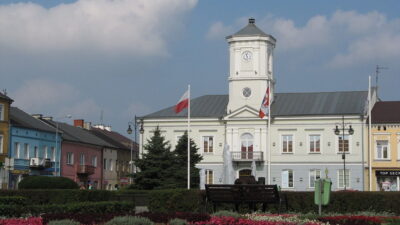Geothermal key to sustainable biomass consumption in Danish district heating
To guarantee a green and sustainable approach to district heating Denmark needs geothermal energy. This requires a push for swift introduction of regulatory and economic framework conditions in support of large-scale geothermal heating.
In a recently published opinion piece in publication “Ingeniøren – grid tech”, Susanne Poulsen, Technical Director at A.P. Moller Holding Geothermal describes how geothermal heating can pave the way for sustainable and locally produced biomass consumption in district heating in Denmark. Here below you can read her take.
We have to end the use of coal in our heat production system and significantly lower the use of biomass to more sustainable levels. The key question which then begs is which heat source(s) will be their adequate replacement? The answer lies in combining different green sources. Without geothermal, the green heat from the earth’s core, we will not reach this goal. Large heat pumps, which extract heat out of seawater or air are excellent heat sources, however, they cannot supply enough heat to facilitate a phaseout of coal and lower biomass consumption. Put bluntly, if geothermal is not part of tomorrow’s energy mix, there will not be sufficient sustainable heat sources. Therefore, we encourage swift introduction of regulatory and economic framework conditions in support of large-scale geothermal heating.
Before the summer recess, a broad majority of the political parties in the Danish parliament (Folketinget) agreed upon on a long list of climate related issues, which are expected to be negotiated in detail this autumn.
Today, solid biomass accounts for roughly two-thirds of the renewable energy in the Danish energy system, underpinned by the statistical approach – in accordance with UN and EU rules – that count the carbon emissions from the burning of biomass as zero in the Danish climate accounts. However, the Danish think tank CONCITO has stated that actual Danish carbon emissions stemming from the direct burning of biomass is 14 million tons a year, with negative repercussions on the world’s biodiversity.
According to CONCITO, sustainable biomass resources are severely limited and “the sustainable biomass resource per person globally is about one third of what we burn per Dane today.” In other words, we need to reduce our biomass consumption by two-thirds in order for it to be truly sustainable. The question which then begs to be answered is where the heat will come from?
The green solution is a mix of many energy sources
In our view, there are two distinct solutions depending on where you live: one solution for individual households outside major cities, and another solution for cities where a district heating system is already in place and/or a high number of heat consumers. For less densely populated areas, individual heat pumps could likely be the obvious choice. However, individual heat pumps are neither pleasing to the eye nor the ear, noisy and big as they are, making district heating the best match for larger cities.
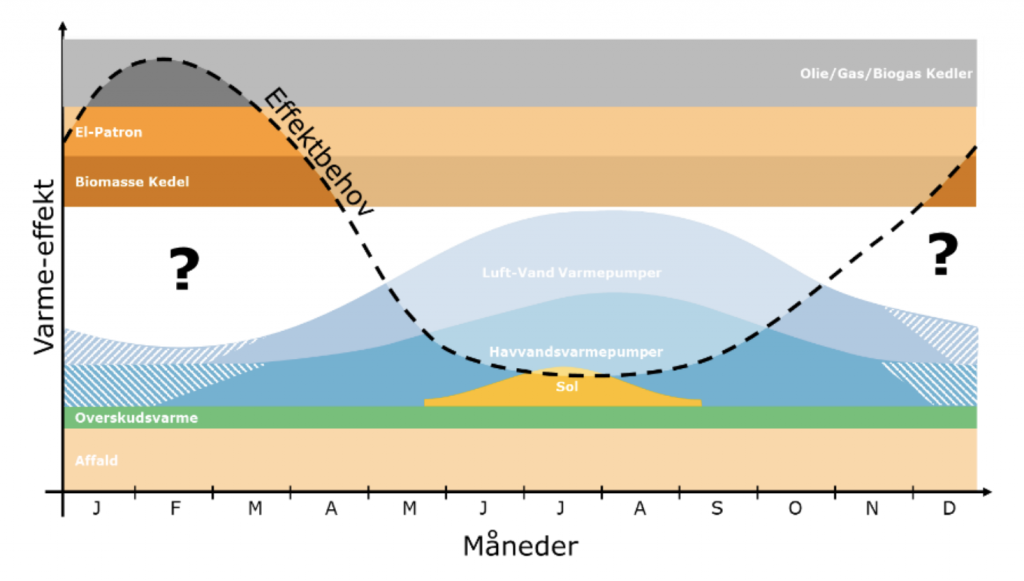
Picture: Effect curve for future heat production system. The white and dashed area
indicates the energy that cannot be produced without imported biomass. (source: AP Moller Holding Geothermal)
Today, district heating companies rely heavily on waste incineration, excess heat supply from central power plants and biomass. In short, up until now, district heating companies have primarily produced heat by setting fire to something, be it coal, waste, straw, wood, oil or gas. All of these are carbon emitting sources, when burned, hence they should be reduced as much as possible, if not eliminated completely, from our heat supply.
In Denmark, a broad parliamentary majority agreed in June that waste, to a much greater extent that is currently the case, should be recycled or upcycled. This will in turn mean less heat from waste incineration. It was also agreed to encourage the use of surplus heat and large heat pumps – which is indeed a good development.
The challenge is, however, that the amount of heat to be generated by heat pumps, running on the energy from sea water or air, is inadequate.
During the cold winter months, heat pumps will be severely challenged by the low temperature of the seawater and air, or by suitable seawater not being available in the required quantities, and thus unable to supply enough heat.
Therefore, choosing only large heat pumps, based on local energy sources in the form of air and water, will present a supply risk. The largest seawater heat pump currently in operation in Denmark only delivers about 1 percent of the heat that Aarhus, the second largest city in Denmark, need.
In addition to the technological challenges of scaling up large heat pumps, it could be relevant to consider environmental issues related to large-scale cooling of the local marine environment, or related to the noise and size of air-to-water heat pump installations in cities.
In other words, large heat pumps based on air and seawater cannot on its own address the green heat production challenge. It is certainly part of the solution, but it is not the whole solution.
Only geothermal can replace biomass in the base and intermediate load
The peak load – i.e. the energy required to cover the district heating demand when heat demand is the highest – can, as is the case today, be covered by using (bio)gas or electric cartridges that are cheap to build but expensive to operate and are therefore optimal for peak loads. In addition, local biomass such as straw and wood chips may form the upper part of the intermediate load in the system. However, there are currently no other alternatives to imported biomass, when it comes to the rest of the intermediate load and parts of the base load in the district heating system.

Picture: Effect curve for future heat production system where base and intermediate load is supplied by geothermal and heat storage. The effect demand in the district heating system is the area under the dashed line. The heat
produced during the summer is used during the winter using heat storage. (source: AP Moller Holding Geothermal)
Effect curve for future heat production system where base and intermediate load is supplied by geothermal and heat storage. The effect demand in the district heating system is the area under the dashed line. The heat produced during the summer is used during the winter using heat storage
This is where geothermal heating holds the key to tomorrow’s sustainable heat supply. Geothermal can be the energy source that fills a large part of the energy gap in the system. In fact, geothermal is at present the only energy source, in addition to biomass, that can supply the necessary energy to the system, and therefore geothermal plays a key role when transitioning to green heat supply in the geographical areas where hot water is sufficiently present in the underground.
The advantage of geothermal heating is that the temperature of the energy source is constant (as opposed to seawater and air).
The temperature of the earth is between 40°C to 80°C at a depth between one to three kilometers and constitutes the depth window where geothermal water can produced if reservoirs are present.
The amount of energy available from the subsurface deposits are large and could, where present, cover up to 30 percent of the total effect demand of a district heating network and as much as 50 percent of energy demand.
Furthermore, once the capital investment has been made in geothermal plants and wells, geothermal heat production has low operational costs, making it operational competitive with the air and seawater heat pumps. During the summer months, when the district heating demand can primarily be covered by sources such as solar energy and seawater pumps, excess geothermal heat can be stored in large hot water pits and serve either as backup during summer or be saved for winter use. This combination achieves greater supply security and a greener energy mix.
This is now the time to create the green district heating system of the future
As we look to 2030, the vision is clear. We need to phase-out coal and limit the use of biomass to a level, where the biomass used primarily comes in the form of locally produced straw or wood chips. We need to electrify district heating and use a range of green energy sources that together provide us with the energy, price and supply security, that coal has given us for many years.
After 2040, more energy sources are envisaged. We note that there are plans to phase-in large scale PtX systems in combination with Carbon Capture and Utilization (CCU) technologies. PtX systems will generate excess heat from the wind turbine power, that they require, when producing green fuels. However, heat production is in principle an unwanted by-product of PtX processes: the more inefficient the PtX processes, the more excess heat they generate. As the PtX technology is improved in the coming years, the excess heat from PtX will decrease. The extent and timing of future excess heat from PtX processes is uncertain, whereas geothermal heating is the only readyto-use, large scale alternative to imported biomass heat. Effect curve for future heat production system where base and intermediate load is supplied by geothermal and heat storage. The effect demand in the district heating system is the area under the dashed line. The heat produced during the summer is used during the winter using heat storage.
We have the opportunity in Denmark to create an integrated, efficient and green district heating system – now the politicians must create the regulatory and economic framework so that we can get started.
Source: A.P. Moller Holding Geothermal













